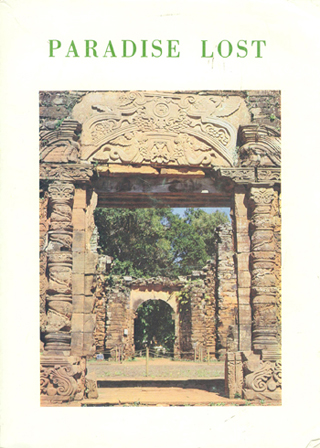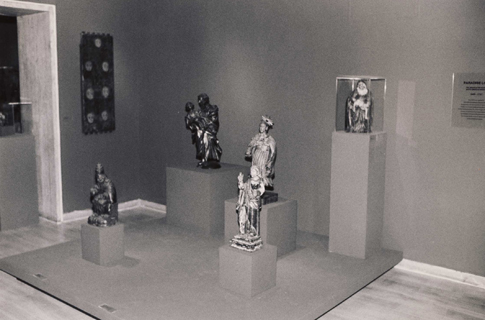Paradise Lost: The Jesuit and Guarani South America Missions, 1606-1767
On view:
through
Paradise Lost: The Jesuit and Guarani South America Missions, 1606-1767
Americas Society presented Paradise Lost: The Jesuit and Guarani South America Missions, 1606-1767 which featured seventeenth and eighteenth century old art and artifacts from Jesuit Missions in South America. The works exhibited were produced by Guarani Indians under the guidance of the missionaries established in what it is today the border of Argentina, Brazil, and Paraguay.

For almost 200 years Jesuit missionaries worked with the Guarani Indians in approximately 30 towns located in territory that now straddles three national boundaries - Argentina, Brazil and Paraguay. These carefully planned and administered communities were unique within the colonial tradition of evangelization for a number of reasons. To begin with, the communities were self sufficient, producing not only adequate sustenance for their survival, but also commercial crops, such as yerba mate, which were marketed by the priests. Each town was efficiently laid out according to an established formula that provided, in addition to the central plaza, cathedral, cloister, and produce garden, well organized living quarters for the Indians. The Jesuits not only created dictionaries which effectively preserved the Guarani language, but were also liberal in permitting local traditions to survive. The Indians were trained in agriculture, but protected from slavery. In social and political terms, the Jesuit ‘reductions' were frequently cited as a model of colonization, but the system came to an end in 1767 when the brotherhood was expelled by the decree of Carlos III.
Under the Jesuits, the Guarani were introduced not just to Christianity, but also to the European artistic concepts of architecture, painting, sculpture, applied arts, and music. The arts that flourished in Paraguay and neighbouring territories under the Jesuits had a distinct character, and sufficient artifacts survived to make possible this exhibition of uncomopromised quality.
This exhibition was curated by Clement James McNaspy, S.J.

An illustrated catalogue accompanied the show and is available for research.
The exhibition was made possible through the support of Fundación La Candelaria, Paraguay, Lineas Aéreas Paraguayas, Ministry of Education and Protocol, Paraguay, and the National Endowment for the Arts.







